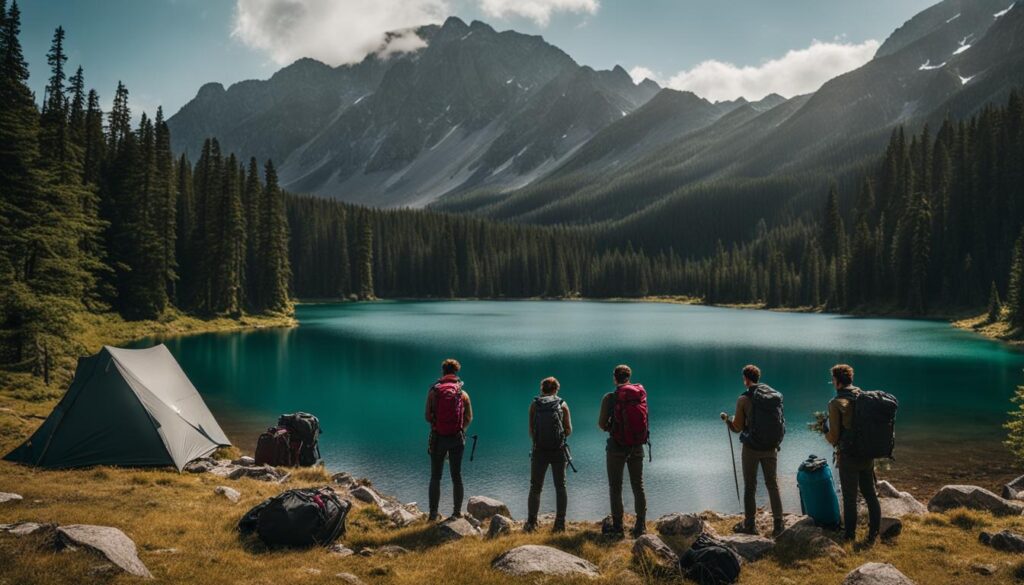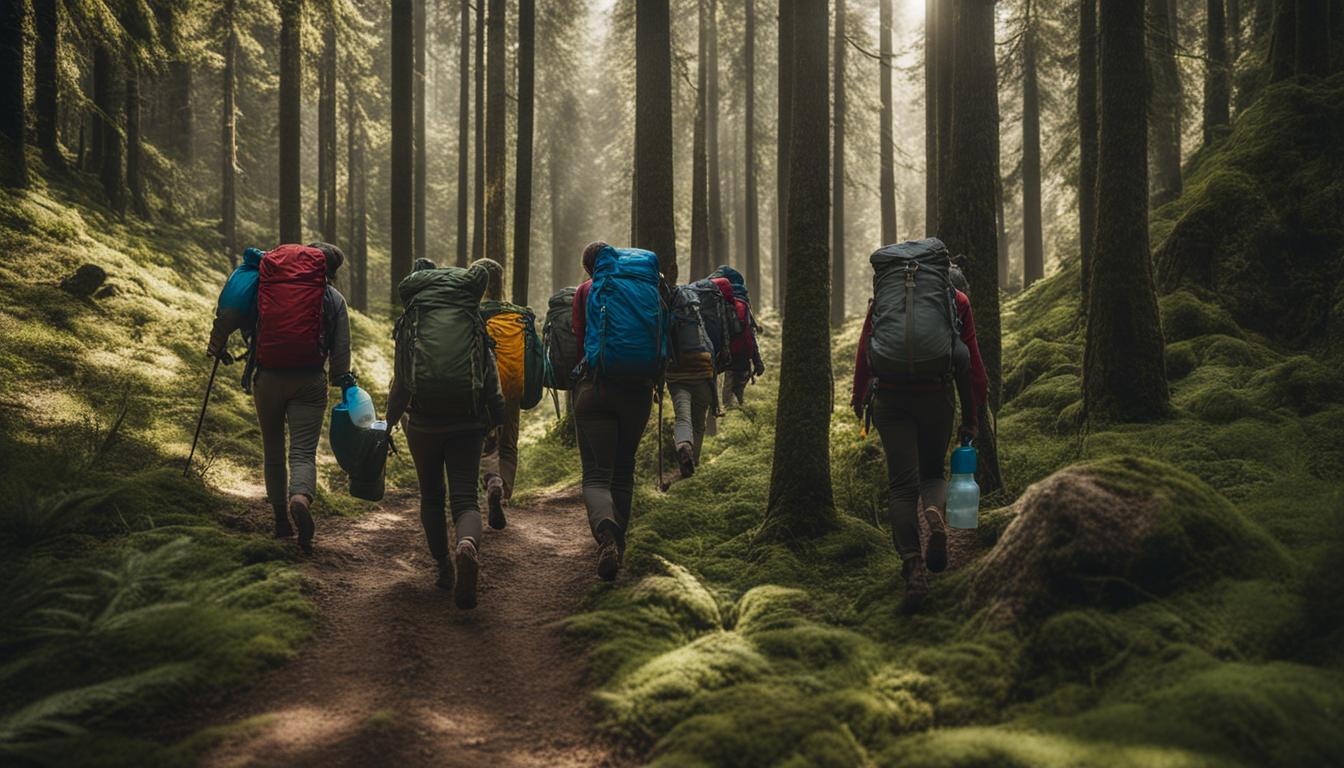Backpacking etiquette, minimizing environmental impact while backpacking, responsible backpacking practices, and Leave No Trace principles are essential aspects of enjoying the wilderness responsibly. As a wilderness enthusiast, I understand the importance of preserving our natural environment for future generations. That’s why learning and implementing the principles of Leave No Trace is crucial for sustainable backpacking and minimizing our impact on the environment.
Key Takeaways:
- Leave No Trace is a set of principles developed by the US Forest Service to minimize the impact of backpackers on the wilderness.
- By following Leave No Trace, we can minimize our environmental impact while backpacking and practice responsible outdoor ethics.
- The Seven Principles of Leave No Trace provide a framework for sustainable backpacking and preserving nature.
- Practicing Leave No Trace ensures the sustainability and preservation of our wild spaces for future generations.
- Remember to plan ahead, travel and camp on durable surfaces, dispose of waste properly, leave natural and historical items untouched, minimize campfire impacts, respect wildlife, and be considerate of other visitors.
The Seven Principles of Leave No Trace

When embarking on a backpacking trip, it is crucial to practice sustainable and eco-friendly techniques to preserve nature and minimize our impact on the environment. The Seven Principles of Leave No Trace offer a valuable framework for responsible backpacking and low impact strategies that every wilderness enthusiast should follow.
1. Plan Ahead and Prepare
Before heading out on your backpacking trip, take the time to research the area you will be visiting. Be aware of any regulations, permits, or restrictions in place. Plan your route and pack essential gear, ensuring you have the necessary skills and knowledge to navigate the wilderness safely. By adequately preparing, you can minimize potential risks and have a more enjoyable experience while minimizing your impact on the environment.
2. Travel and Camp on Durable Surfaces
When setting up camp or walking through the wilderness, stick to durable surfaces such as established trails, rock, or gravel. Avoid trampling delicate vegetation and fragile ecosystems. By staying on durable surfaces, you can prevent unnecessary damage to the surrounding environment, allowing it to thrive for years to come.
3. Dispose of Waste Properly
One of the fundamental principles of Leave No Trace is to leave nature as you found it. This means packing out all your trash, including food scraps and personal hygiene products. Avoid leaving any trace of your presence by properly disposing of waste in designated containers or carrying it out with you. Remember, when it comes to waste, leave nothing behind.
4. Leave Natural and Historical Items Untouched
While exploring the wilderness, it may be tempting to collect souvenirs or interact with natural and historical items. However, it is essential to resist the urge and leave these items untouched. By preserving the natural environment and historical artifacts, we ensure that future generations can enjoy the same untouched beauty and cultural significance.
5. Minimize Campfire Impacts
If campfires are allowed in your backpacking area, follow specific guidelines to minimize their impact. Use established fire rings or pits whenever possible and only burn small, dead wood. When extinguishing the fire, make sure it is completely out and cool to the touch. Leave no trace of your campfire behind by properly disposing of ashes and ensuring the area is clean and free from debris.
6. Respect Wildlife
While encountering wildlife can be a thrilling experience, it is essential to remember that we are visitors in their habitat. Respect wildlife by observing from a distance and never approaching or feeding them. Keep your food and trash secure to avoid attracting animals. By respecting wildlife, we maintain the natural balance of the ecosystem and protect both the animals and ourselves.
7. Be Considerate of Other Visitors
When backpacking, it is essential to be considerate of other visitors sharing the wilderness with you. Keep noise levels to a minimum and respect the solitude and tranquility of the environment. Yield to others on the trail and practice proper trail etiquette. By being considerate, we foster a positive and enjoyable experience for everyone.
By adhering to the Seven Principles of Leave No Trace, we can ensure that our backpacking trips have minimal impact on the environment while preserving the beauty and integrity of our wild spaces. Let’s embrace sustainable backpacking tips and eco-friendly techniques to enjoy nature responsibly and leave it untouched for future generations.
Conclusion
I hope this article has shed light on the importance of practicing responsible backpacking practices and preserving nature while exploring the wilderness. By adhering to the principles of Leave No Trace, we can ensure the sustainability and beauty of our natural spaces for future generations.
Remember, backpacking etiquette goes beyond simply enjoying the outdoors. It involves planning ahead and preparing for your trip, choosing durable surfaces to camp and travel on, and disposing of waste properly. These small actions can have a big impact on minimizing our environmental footprint.
When out in the wilderness, it’s crucial to leave natural and historical items untouched, respect wildlife from a safe distance, and be considerate of other visitors. By following these simple guidelines, we can ensure a positive and harmonious experience for everyone.
So the next time you embark on a backpacking adventure, I encourage you to incorporate these sustainable backpacking tips into your journey. Let’s be stewards of the environment and leave no trace, so that we can continue to enjoy the wonders of nature for years to come.

